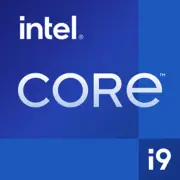Intel Core i9-14900F

The Intel Core i9-14900F processor is a powerhouse for desktop computing, boasting 24 total cores and 32 total threads that make it an ideal choice for both gaming and professional workloads. With a base frequency of 2.0 GHz and a max turbo frequency of 5.8 GHz, this processor delivers exceptional performance and can handle heavy workloads with ease.
The Intel 7 technology and 36MB L3 cache ensure fast and efficient processing, while the 65W TDP makes it relatively power-efficient considering its high performance capabilities. The Geekbench 6 scores of 2985 for single-core performance and 23010 for multi-core performance further attest to its impressive capabilities.
Whether you're a professional in need of a reliable processor for demanding tasks such as video editing and 3D rendering, or a gamer looking for seamless gaming performance, the Intel Core i9-14900F is definitely worth considering. Its impressive specifications and performance make it a top choice for those in need of a high-end desktop processor. Overall, this processor is a top-of-the-line option for anyone in need of uncompromising performance.
Basic
Label Name
Intel
Platform
Desktop
Launch Date
January 2024
Model Name
?
The Intel processor number is just one of several factors - along with processor brand, system configurations, and system-level benchmarks - to be considered when choosing the right processor for your computing needs.
i9-14900F
Code Name
Raptor Lake Refresh
CPU Specifications
Total Cores
?
Cores is a hardware term that describes the number of independent central processing units in a single computing component (die or chip).
24
Total Threads
?
Where applicable, Intel® Hyper-Threading Technology is only available on Performance-cores.
32
Performance-cores
8
Efficient-cores
16
Performance-core Base Frequency
2.0 GHz
Efficient-core Base Frequency
1.5 GHz
Performance-core Max Turbo Frequency
?
Maximum P-core turbo frequency derived from Intel® Turbo Boost Technology.
5.8 GHz
L1 Cache
80K per core
L2 Cache
2MB per core
L3 Cache
36MB shared
CPU Socket
?
The socket is the component that provides the mechanical and electrical connections between the processor and motherboard.
LGA-1700
Technology
?
Lithography refers to the semiconductor technology used to manufacture an integrated circuit, and is reported in nanometer (nm), indicative of the size of features built on the semiconductor.
Intel 7
TDP
65 W
Max. Operating Temperature
?
Junction Temperature is the maximum temperature allowed at the processor die.
100°C
Memory Specifications
Memory Type
?
Intel® processors come in four different types: Single Channel, Dual Channel, Triple Channel, and Flex Mode. Maximum supported memory speed may be lower when populating multiple DIMMs per channel on products that support multiple memory channels.
DDR5-5600
Max Memory Size
?
Max memory size refers to the maximum memory capacity supported by the processor.
128GB
Memory Channels
?
The number of memory channels refers to the bandwidth operation for real world application.
2
GPU Specifications
Integrated Graphics Model
?
An integrated GPU refers to the graphics core that is integrated into the CPU processor. Leveraging the processor's powerful computational capabilities and intelligent power efficiency management, it delivers outstanding graphics performance and a smooth application experience at a lower power consumption.
No
Benchmarks
Cinebench R23
Single Core
Score
2322
Cinebench R23
Multi Core
Score
40730
Geekbench 6
Single Core
Score
2985
Geekbench 6
Multi Core
Score
23010
Geekbench 5
Single Core
Score
2104
Geekbench 5
Multi Core
Score
22482
Passmark CPU
Single Core
Score
4572
Passmark CPU
Multi Core
Score
52298
Compared to Other CPU
Cinebench R23 Single Core
Cinebench R23 Multi Core
Geekbench 6 Single Core
Geekbench 6 Multi Core
Geekbench 5 Single Core
Geekbench 5 Multi Core
Passmark CPU Single Core
Passmark CPU Multi Core
Share in social media
Or Link To Us
<a href="https://cputronic.com/en/cpu/intel-core-i9-14900f" target="_blank">Intel Core i9-14900F</a>